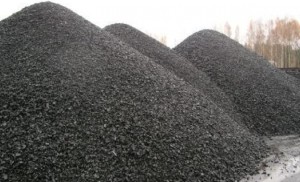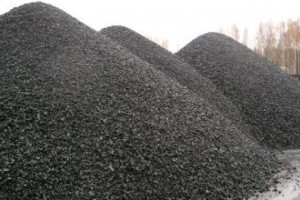Coal production in Ukraine decreased by 17%
The coal production in Ukraine decreased by 17% yoy in the first nine months of the year, said Deputy Minister of Energy and Coal Industry Yuriy Zhukov. For the period were harvested 57 million tonnes against 68.6 million tonnes in the same period of the year, he said. Yuriy Zhukov said that because of the […]

 The coal production in Ukraine decreased by 17% yoy in the first nine months of the year, said Deputy Minister of Energy and Coal Industry Yuriy Zhukov. For the period were harvested 57 million tonnes against 68.6 million tonnes in the same period of the year, he said. Yuriy Zhukov said that because of the tension in the Donbass coal mining region decreased by 12 million tonnes. Zyukov commented to Ukrainian media in September that the coal industry in Ukraine is “on the point of extinction” because of the tension in the Donbass, which combines the two administrative regions – Donetsk and Lugansk.
The coal production in Ukraine decreased by 17% yoy in the first nine months of the year, said Deputy Minister of Energy and Coal Industry Yuriy Zhukov. For the period were harvested 57 million tonnes against 68.6 million tonnes in the same period of the year, he said. Yuriy Zhukov said that because of the tension in the Donbass coal mining region decreased by 12 million tonnes. Zyukov commented to Ukrainian media in September that the coal industry in Ukraine is “on the point of extinction” because of the tension in the Donbass, which combines the two administrative regions – Donetsk and Lugansk.
“As a result, coal production is reduced to catastrophic levels in the country and even occurs deficit of coal to power plants”, said Deputy Minster. Only in August, the yield was 700 thousand tonnes and in previous months – 2 million tonnes commented Zyukov.
Ukraine is one of the biggest exporters of coal in Europe. According to the European Association Euracoal the country has reserves of 31.8 gigatonnes of anthracite coal. Because of the crisis in the eastern parts of the country, however, it is about to become an exporter to importer. The Prime Minister Arseniy Yatsenyuk warned on 22nd October 2014 at a meeting of the government said that Ukraine will have to buy 4 million tonnes of coal to be secured the energy balance.
At first Kiev will buy coal from South Africa. Plans are raw material to arrive by ship passing through the Bosphorus.









